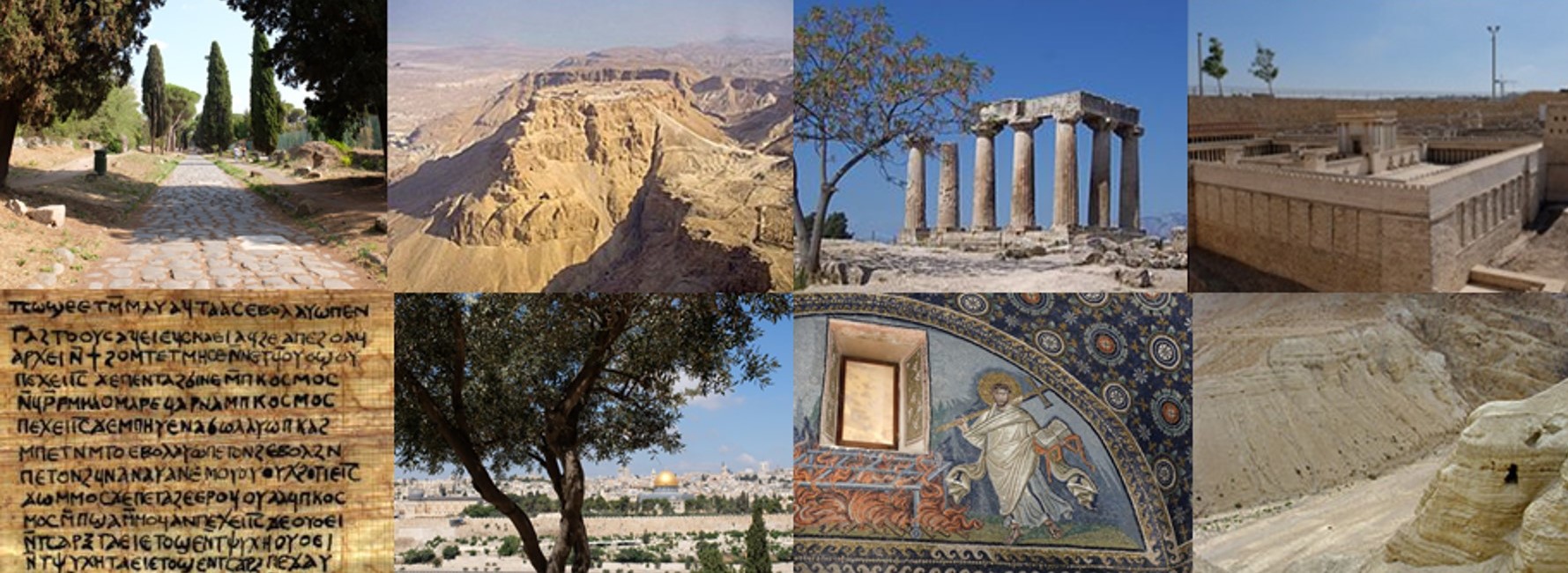Use and Influence of the New Testament Chairs: Alison Jack and John Lyons
Session One
Aspects of the Reception History of Acts 2 and 4 (jointly with the Book of Acts seminar)
Steve Walton, Trinity College, Bristol; Taylor Weaver, University of Kent; Simon Woodman, Bloomsbury Baptist Church
Download Steve Walton’s complete paper
Session Two
Siobhan Jolley, University of Manchester, ‘Killing Adam’s Eve: Latent Biblical Imagery in BBC America’s Killing Eve’
This paper will consider the subversion of traditional Christian rhetoric regarding women in BBC America’s Killing Eve. It will argue that its portrayal of transgressive women provides a vehicle for re-remembering the biblical figures of Eve and Mary Magdalene, and challenging the associated gender norms that have become archetypal for women in Christian tradition.
The way in which biblical themes are embedded in western culture more broadly affords popular culture a particular utility in assessing their complex imagery and the way in which ideals about gender and femininity are communicated. Moreover, the dialectical nature of popular culture as both descriptive and prescriptive offers a unique means of engaging with these established ideals. In Killing Eve the presentation of women draws upon and subverts the way in which these biblical women are conventionally characterised, and the subsequent types in which other women are cast.
First, the paper will identify latent biblical imagery in the development of the characters of Eve and Villanelle, illustrating how gendered tropes in the portrayal of the Biblical Eve and Mary Magdalene are reclaimed and reimaged. This in turn provides a lens for revisiting biblical source material from Genesis and the Gospels and considering the relationship between text and reception. Using this as tool for critiquing the cultural inheritance that leads to the construction of gender norms, it will argue that ‘killing’ traditional imagery can provide some initial deconstruction of patriarchal boundaries for women in Christian tradition.
Session Three
Tobias Ålöw, University of Gothenburg, Sweden, ‘“…I am Your Handsome White Jesus…”: Kenny Powers and the Plerotic Parody of Christology in HBO’s Eastbound and Down’
Notwithstanding its combination of popularity, critical acclaim, and reiterated reference to messianic ideas and language, the use and influence of the New Testament on HBO’s sports comedy Eastbound and Down (2009–2013) has not been previously adressed within the field of biblical reception-criticism. The paper, therefore, engages this matter with special attention to how various New Testament messianic ideas are re-used and parodied in the portrayal of the show’s main protagonist—the washed-up, self-delusional, mullet-sporting, drug-abusing, foul-mouthed, self-absorbed, former major league baseball player turned middle–school PE-coach—Kenny Powers. Taking its point of departure in S. Klint’s theoretical and methodological approach to reception-criticism, the paper examines specifically how notions related to sacrifice, resurrection and parousia are taken over and are transformed in the staging of Powers as a self-proclaimed Messiah-figure. The paper, thereby, not only describes how the biblical presence is made manifest by tracing the scriptural roots of the christological concepts employed, but also attempts to lay bare the tension between approach and deviation from the biblical material, and describe the function of the biblical traditions within the pertinent work of reception. By juxtaposing the crude messianic depiction of Kenny Powers with the theologically convoluted description of Jesus in the ‘Christ Hymn’ of Phil. 2:5–11, the paper argues that the basic kenotic emphasis evinced by early Jesus-followers has been transformed into a fundamentally plerotic parody of New Testament Christology. Through analysis of the re-use of New Testament messianic ideas in the portrayal of Kenny Powers the paper sheds light particularly on the use and influence of the New Testament on Eastbound and Down, but attests at the same time to the enduring influence of the Bible on Western culture in general.
Damian Cyrocki, St Mary’s University, Twickenham, ‘Like a Daughter of Man? A Peculiar Reading of Revelation 1:13’
The Mariavite Catholic Church is a Christian movement that emerged from Polish Roman Catholic Church at the beginning of the 20th century. According to the official representatives of the Mariavites, its theology is coherent with the tradition of the undivided Catholic Church of the first millennium as they understand it. Nevertheless, there are some elements presents that distinguish this community from all the others, particularly its millenarian readings of the Bible.
One of such specifics is their idiosyncratic reading of the passage from Rev 1:13 where son of man (υἱὸν ἀνθρώπου) is understood to be female mainly due to possessing female breasts (μαστοῖς). Subsequently this passage is read back as a reference to the mystic, Maria Franciszka Kozłowska, who is understood as the bride of Jesus. Archbishop Jan Maria Kowalski, who was the leader of the Church at early stages of its formation, came up with this understanding around the year 1930. After his death we can observe the slow degradation of this interpretation into oblivion. Why did this happen?
The main aim of the paper is to show how Archbishop Kowalski came up with this interpretation of Rev 1:13. This paper will assess his peculiar reading in light of possible antecedents in the history of Christian Church, or at least those who came up with similar conclusions or pointed similar directions. It will then move on to how this interpretation was implemented and the reasons why this interpretation was eventually marginalized.

